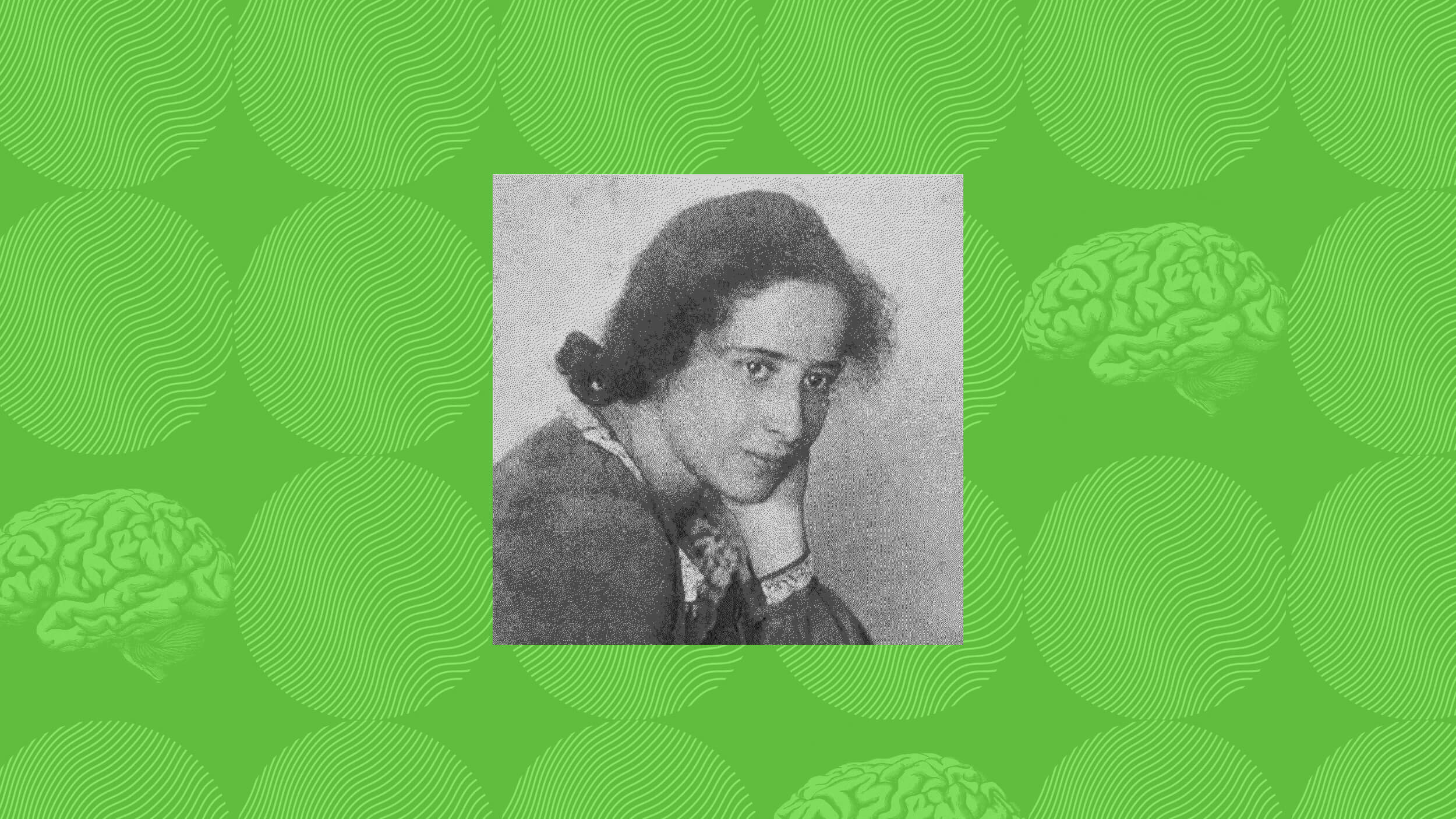- Thought experiments are quite popular, though some get more time in the sun than others.
- While they are supposed to help guide our intuition to help solve difficult problems, some are a bit removed from reality.
- Can we trust the intuitions we have about problems set in sci-fi worlds or that postulate impossible monsters?
Despite the reported unpopularity of philosophy, its thought experiments are extremely popular tools for helping people understand how they look at the world. Famous examples, such as the Veil of Ignorance and the Trolley Problem, permeate popular culture, feature on memes, and help people clarify their thinking.
Not all thought experiments are created equal, though. Some of them are far less popular than others, some have fallen from being widely discussed to being historical curiosities, and others were always just restatements of Descartes.
A few of them, popular and unpopular, have pushed the limits of what a “good” thought experiment is. Philosopher and Big Think contributor Daniel Dennett suggests that many thought experiments venture into areas where we cannot have good intuitions, making them less than ideal experiments.
For example, while we can all think very clearly about the trolley problem—everything in it is straightforward enough to be grasped by everybody—an experiment that asks us to imagine sci-fi situations or the life choices of fantastic monsters might be too far out there to be effective.
Today, we’ll look at five thought experiments that have been accused of being just a little too separated from reality to be useful. We’ll consider what they’re trying to shed light on, and review why they may or may not manage to do it.
A thought experiment we’ve discussed before that dives into questions of identity and meaningful language is the Swampman. Donald Davidson wrote it in 1987:
“Suppose a man is out for a walk one day when a bolt of lightning disintegrates him. Simultaneously, a bolt of lightning strikes a marsh and causes a bunch of molecules to spontaneously rearrange into the same pattern that constituted that man a few moments ago. This ‘Swampman’ has an exact copy of the brain, memories, patterns of behavior as he did. It goes about its day, works, interacts with the man’s friends and is otherwise indistinguishable from him.”
Is the Swampman the same person as Davidson? When he refers to things he “remembers” seeing before, even though the Swampman never actually saw them, do his words mean anything? This experiment, combined with “The Ship of Theseus” causes people to wonder if teleportation through creating a copy of a person and then destroying the original actually “kills” the person being teleported.
Of course, we don’t have teleportation yet, nor are there actual Swamp-people running around (Or are there!?!?!). While the questions raised by the Swampman are important ones, Dennett’s warning is that we shouldn’t be too quick to trust our intuition when the problem is so separated from anything we’ve ever encountered.
This thought experiment from Robert Nozick’s defense of libertarianism “Anarchy, State, and Utopia” asks what we’d have to do if Utilitarianism is correct and we met something capable of much greater happiness than anybody else.
“Utilitarian theory is embarrassed by the possibility of utility monsters who get enormously greater gains in utility from any sacrifice of others than these others lose. For, unacceptably, the theory seems to require that we all be sacrificed in the monster’s maw, in order to increase total utility.”
If there was a utility monster that got a million times more joy out of everything than anybody else does, would we be obligated to give it everything it demanded to maximize the total happiness? Even if those demands cause suffering, but never enough to tip the ethical scales, elsewhere? If so, what does this mean for Utilitarianism as a moral theory?
At first, this experiment doesn’t seem too bizarre. We all grasp the idea of somebody who gets more out of something than we do; this is just taking that idea to the extreme. The fundamental problem with this experiment was pointed out by philosopher Derek Parfit who argued that, while we are capable of imagining somebody who is happier than we are or who would get more out of something than we do, the idea of a creature that gets a million times more happiness out of things is impossible to imagine in a meaningful way.
How can we get useful insights into the problem if we can’t hope to grasp how this monster interacts with the world? Because of this difficulty, Parfit rejected the problem.
Utilitarian philosopher and Big Think contributor Peter Singer accepts that if there were utility monsters there might be a problem for Utilitarianism, but, as he explained to The Nation, he finds the idea far-fetched. When posed the problem in the context of a billionaire owning a superyacht rather than donating money to fund medical treatments, he replied:
“We would have to assume that Larry Ellison actually has capacities for happiness that are vastly greater than anyone else’s. Ellison’s yacht cost $200 million, and if we assume that $400 can repair an obstetric fistula, that means that the suffering relieved by 500,000 obstetric fistula repairs is not greater than the happiness that Ellison gets from his yacht. That, I think, is not physically possible.”
Continuing on the theme of bizarre thought experiments involving monsters, we have a strange reworking of Pascal’s Wager involving a super-intelligent AI. It was created by a contributor to the website LessWrong named “Roko.”
Given the length of the original post, I will summarize it here:
Imagine for a moment that humanity will someday create a hyper-powered artificial intelligence that is capable of solving all of the world’s problems. It follows a form of utilitarian ethics and is trying to reduce human suffering as much as it can, which is a considerable amount. Given all the good it can do, it coming into existence, and doing so quickly, would substantially benefit humanity. Fully capable of simulating anything it wants, it then decides to take steps to punish those who knew about the good it could do but didn’t help create it by torturing simulations of them.
Is it rational then to start donating a lot of money to those creating this super intelligence to avoid having it simulate and torture a copy of you in the future? This experiment gained a fair amount of notoriety online, and a name based on the creature that kills with its gaze, because by reading about it, you think about the monster and become a potential victim in the future, since now you know about it and might choose not to help create it.
Maybe I should have mentioned that part first. Oh well, so it goes.
As you might have realized, this experiment requires you to assume that we can reliably predict the behavior and motivations of a particular, ultra-intelligent AI that doesn’t exist yet and may never exist. In terms of raw intelligence, this might be akin to asking a brainless starfish to predict how a human will behave one hundred years from now. While the experiment is said to have given some people nightmares, it isn’t taken seriously by most people outside a small circle on the internet.
Plus, the long list of assumptions in the experiment includes that a simulation of you is actually “you” in a meaningful way. We have to solve the Swampman problem before we can agree on that point at all.
A surreal experiment by Judith Thomson that appeared in her famous essay “A Defense of Abortion.“ The essay is a series of arguments for the morality of abortion in certain circumstances through thought experiments. While some parts of it are quite famous, this section seems to avoid widespread discussion:
“Again, suppose it were like this: people-seeds drift about in the air like pollen, and if you open your windows, one may drift in and take root in your carpets or upholstery. You don’t want children, so you fix up your windows with fine mesh screens, the very best you can buy. As can happen, however, and on very, very rare occasions does happen, one of the screens is defective; and a seed drifts in and takes root.”
The question being, would it be acceptable to uproot the person-plant-fetus that gets in? Is it too much to ask that people live without cloth in their homes if they don’t want people seeds to get in? How about never opening their doors or windows?
While this is supposed to be analogous to accidental pregnancy resulting from birth control failures, the downright bizarre nature of the thought experiment has been commented on by more than a few critics. Philosopher Kathleen Wilkes argued that it was too far removed from our reality to provide meaningful intuitions on abortion in her book “Real People.”
After all, society would probably have very different ideas on what the right to life means if we came into the world because a bit of pollen landed on the carpet.
A problem created to dive into questions of language by Hilary Putnam, the Twin Earth experiment dives into questions of language and meaning using a story straight out of a one-shot comic book:
“We begin by supposing that elsewhere in the universe there is a planet exactly like Earth in virtually all aspects, which we refer to as “Twin Earth.” (We should also suppose that the relevant surroundings are exactly the same as for Earth; it revolves around a star that appears to be exactly like our sun, and so on). On Twin Earth, there is a Twin equivalent of every person and thing here on Earth. The one difference between the two planets is that there is no water on Twin Earth. In its place there is a liquid that is superficially identical, but is chemically different, being composed not of H2O, but rather of some more complicated formula which we abbreviate as ‘XYZ.’ The Twin Earthlings who refer to their language as ‘English’ call XYZ ‘water.’ Finally, we set the date of our thought experiment to be several centuries ago, when the residents of Earth and Twin Earth would have no means of knowing that the liquids they called ‘water’ were H2O and XYZ respectively. The experience of people on Earth with water and that of those on Twin Earth with XYZ would be identical.”
Do the Earthling (who Putnam named Oscar) and his twin (also named Oscar) mean the same thing when they say “water?” Their mental states are the same when they refer to it, but the object in question is physically different in each case. If the twins’ statements don’t mean the same thing, then we must admit that external factors play a role in defining terms external to the speaker, a stance dubbed “scientific externalism.”
While this experiment is quite famous and has advanced a fair amount of debate, you can probably already see the difficulties some people have with it.
Philosopher Tyler Burge has argued that the whole experiment is flawed, as Earth Oscar refers to the concept of “H2O,” while Twin Earth Oscar is referring to the concept of “XYZ.” Dr. Burge argued that this means their mental states are different from the get-go. He also points out that the stuff flowing on Twin Earth isn’t actually water, which might derail the whole thing.
For his part, Putnam criticized others for using thought experiments that require you to ignore specific ideas to arrive at the intended ones. In this experiment, with humans presumably still being 60 percent water, you’d have to imagine that changing what water is at the molecular level would not alter the beings thinking about the water in any meaningful way. He has also admitted that Dr. Burge’s first critique is actually a very good one.
Surprisingly, Daniel Dennett has spent a fair amount of time discussing the content of the problem rather than on how strange the whole experiment is in the first place. It might go to show that philosophers love a good thought experiment, even if the results aren’t directly applicable to the real world.






